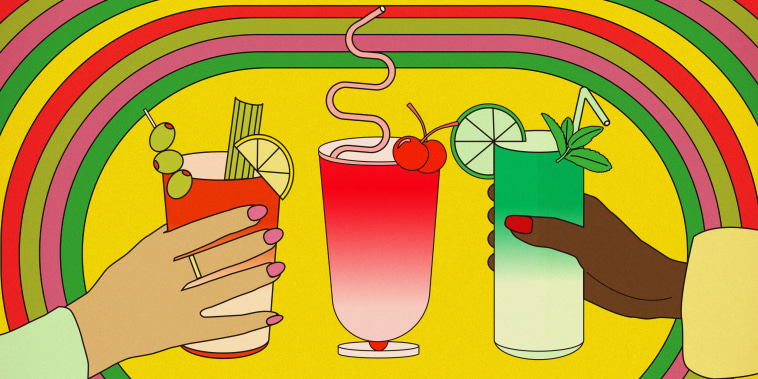The Rise of Dry January and Price Shock of Mocktails
Dry January, the nationwide initiative for abstaining from alcohol for the entire first month of the year, has increased dramatically in popularity over the years. The event, started by the charity Alcohol Change UK in 2013, is designed to promote better health, improve sleep, save money, and bring about a new relationship with alcohol. However, while the benefits of Dry January are compelling, a new challenge is emerging: the high cost of alcohol-free alternatives such as ‘mocktails’. The sticker shock associated with these non-alcoholic beverages is causing concern among some participants.
Mocktails or no-alc mocktails, as they’re often termed, have been around for a while, designed to offer those who don’t drink alcohol a sophisticated beverage that doesn’t rely on simple soda or juice. They’ve gained ranked popularity especially among individuals committed to Dry January, millennials preferring healthier alternatives to alcohol, or those seeking an inclusive social experience without the hangover.
To accompany the rise in Dry January, bars and restaurants are extending their offerings to a variety of creative and experimentative mocktails to mimic alcoholic cocktails’ complexity and feel. However, surprising for many, these alcohol-free alternatives often carry a similar price tag to their traditional counterparts.
One reason for the high cost of these ‘virgin’ drinks is the quality of ingredients required. In contrast to alcoholic beverages, where spirits can often mask inferior ingredients, non-alcoholic drinks rely heavily on the quality and freshness of the products to deliver a robust and satisfying flavor. Mocktails often contain premium elements such as non-alcoholic distilled spirits, craft mixers, and exotic fruits, contributing to their elevated price point.
Another factor contributing to the price shock is the labor and skill required to make mocktails. Crafting a mocktail is a delicate process, requiring knowledge, creativity, and the ability to balance flavors without alcohol’s backbone. For many mixologists, creating a delicious and complex mocktail that mimics the depth and intricacy of a cocktail is a notable challenge. Bars argue that the labor and expertise invested in these drinks justify their costs, and the pricing for mocktails aligns with the meticulous craft behind these beverages.
Moreover, operational costs involved in making and serving mocktails shouldn’t be overlooked. Bottling, branding, and product marketing are few among several expenditures incurred by producers. Mocktail-specific menus require graphic designers, consultants, photographers, and marketing experts. Furthermore, higher-end establishments argue that the price of any drink reflects not just the cost of ingredients, but the ambiance and hospitality that come with the drinking experience.
While these reasons justify the prices from an industry perspective, for consumers committed to Dry January or reducing alcohol intake, the surprising cost of mocktails can be a deterrent. To overcome this, many are channeling their creativity into making homemade mocktails. DIY mocktail-making not only offers a fun and engaging activity, but it also provides a more cost-effective alternative.
Despite the sticker shock, the popularity of Dry January and demand for non-alcoholic alternatives shows no signs of slowing down. Continued innovation and competition in the sector hint that in time, the market might provide lower-cost options for consumers. Until then, the challenge for Dry January participants is finding the joy and health benefits of a sober start to the year without breaking the bank.
